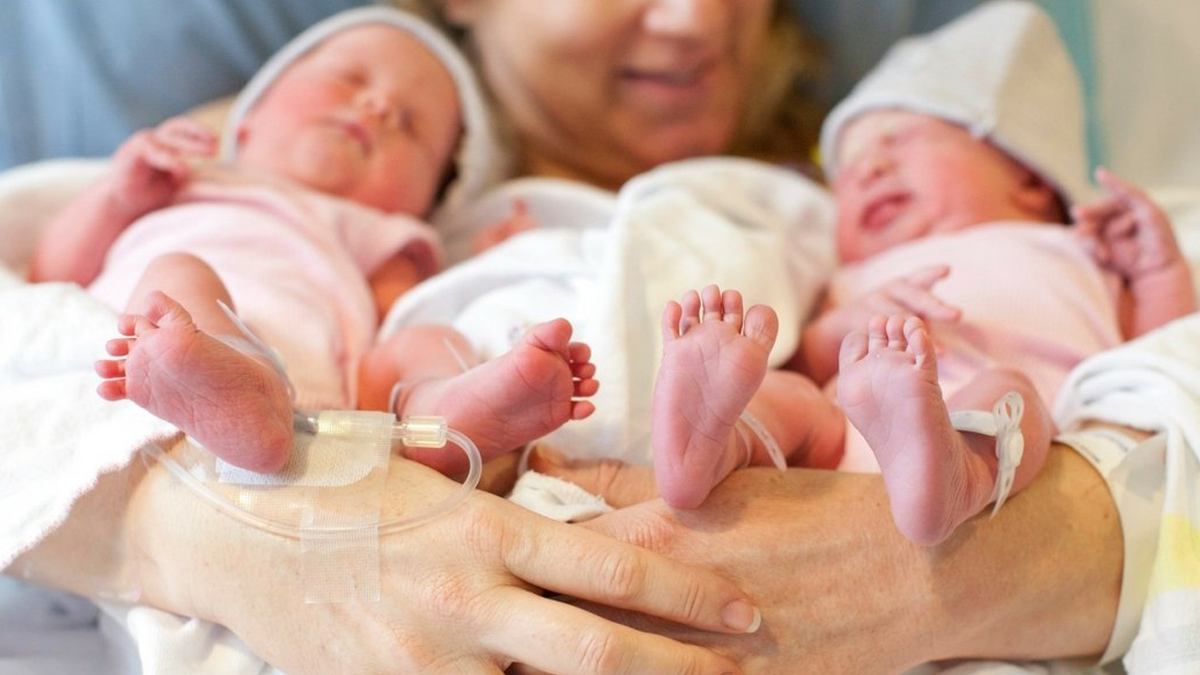
The birth of twins has always fascinated people. Throughout history, twins have been seen as special, sometimes even magical. Today, medical science helps us understand the different types of twin pregnancies and the unique care they need. One special kind is called monochorionic-diamniotic (MCDA) twins. These twins share a single placenta but have their own amniotic sacs. This type of pregnancy brings both joy and extra challenges. Many parents wonder: What exactly are MCDA twins, and is normal (vaginal) delivery possible in such cases?
Table of Content:-
What Are Monochorionic-Diamniotic (MCDA) Twins?![Monochorionic Diamniotic Twins 1 - 2025-05-21T134456.588]()
MCDA twins are a type of identical twins. They come from a single fertilized egg that splits between the fourth and eighth day after conception. This split leads to two babies who share one placenta but each have their own protective amniotic sac. Dr Priya Deshpande, Senior Consultant Fetal Medicine, Apollo Hospitals Navi Mumbai, explains, “MCDA twins represent a particular type of identical twin pregnancy in which two fetuses share a single placenta but are enclosed within separate amniotic sacs. This occurs when a single fertilised egg divides between the fourth and eighth day after conception. MCDA pregnancies make up approximately 70% of all monozygotic twin gestations.”
Why Is MCDA Pregnancy High-Risk?![mcda twins delivery 2 - 2025-05-21T134458.555]()
Sharing a placenta means the twins share a blood supply, which can cause problems. The biggest risk is Twin-to-Twin Transfusion Syndrome (TTTS), where blood flows unevenly between the babies. One twin may get too much blood, while the other gets too little. If not treated, TTTS can be very serious. Other risks include:
- Selective intrauterine growth restriction (sFGR): One twin grows slower than the other.
- Twin anemia-polycythemia sequence (TAPS): One twin becomes anemic, while the other has too many red blood cells.
- Rarely, cord entanglement or problems if the membrane between the twins breaks early.
Because of these risks, MCDA pregnancies are closely watched with frequent ultrasounds and other tests. Dr Deshpande says, “The shared placental structure in MCDA twins introduces certain risks that are not typically present in dichorionic pregnancies, where each baby has its own placenta. Because of these risks, MCDA pregnancies are classified as high-risk and require intensive prenatal monitoring, including serial fetal ultrasounds, Doppler studies, and in some cases, fetal echocardiography.”
ALSO READ: Is Air Conditioning Good for Newborn Babies? Find Out the Ideal Temperature Range
Is Normal (Vaginal) Delivery Possible for MCDA Twins?![Monochorionic Diamniotic Twins delivery 3 - 2025-05-21T134501.045]()
Many parents worry that a cesarean section is the only option. However, normal delivery is possible in some MCDA pregnancies. Dr Deshpande explains, “Despite these complexities, vaginal delivery is not ruled out for MCDA twins. The possibility of a normal birth depends on several factors, with fetal presentation being paramount. If the first twin is in a cephalic (head-down) position and there are no other contraindications, a vaginal delivery may be considered occasionally even if the second twin is in breech or transverse lie provided the clinical team is skilled in managing such scenarios.”
Other important factors include:
- Gestational age (most MCDA twins are delivered between 36 and 37 weeks)
- Estimated fetal weights and size difference between twins
- The health of the mother and babies
- Availability of a skilled team and emergency facilities
A study published in the American Journal of Obstetrics and Gynecology found that about 75% of MCDA twin pregnancies where labor was attempted resulted in vaginal delivery of both twins. The chance of needing a cesarean for the second twin was low, and outcomes were similar to those of other twin types.
Dr Deshpande adds, “In uncomplicated MCDA pregnancies, delivery is generally advised between 36 and 37 weeks’ gestation to lower the risks of stillbirth and late-pregnancy complications. Intrapartum care must include continuous fetal monitoring, and the birth should take place in a facility equipped for emergency cesarean delivery and advanced neonatal care, given the unpredictable nature of twin labour.”
ALSO READ: How To Burp Your Newborn Baby: Easy Tips For A Happy Tummy Of Toddlers
Conclusion
MCDA twin pregnancies are special and need extra care. With close monitoring and a skilled medical team, normal delivery is possible for many women. According to the expert, although MCDA twin pregnancies present a higher risk profile, a well-monitored and carefully managed case may still be suitable for vaginal delivery. Ultimately, the delivery plan should be individualised, with decisions guided by maternal and fetal well-being above all else.
Also watch this video
Read Next
From First Cry To First Steps: The Vital Role Of Preventive Healthcare In A Baby’s First Year
How we keep this article up to date:
We work with experts and keep a close eye on the latest in health and wellness. Whenever there is a new research or helpful information, we update our articles with accurate and useful advice.
Current Version


